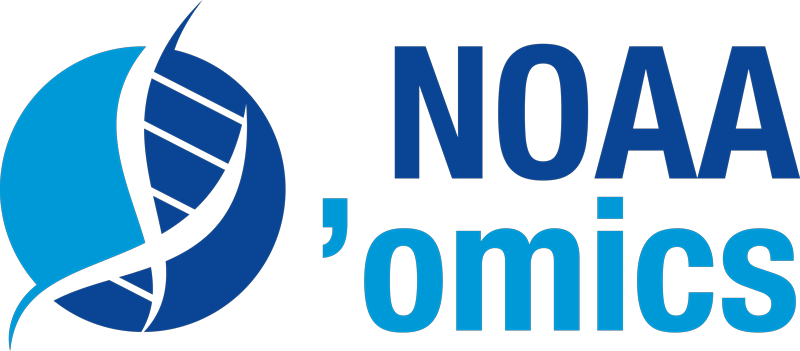December 7, 2022 (recording unavailable)
- Title: Diversity and phylogeny of Chaetopterus (Annelida: Chaetopteridae) and associated macroinvertebrates in Djibouti
- Presenter: Shannon Brown, Lab Manager (Research Scientist), Cooperative Institute for Climate, Ocean, & Ecosystem Studies (CICOES), University of Washington, NOAA’s Pacific Marine Environmental Laboratory (PMEL) ‘Omics Lab
October 19, 2022 (recording here)
- Title: Metagenomic discovery of microbial and host genetic features of the marine polychaete Sirsoe methanicola colonizing a methane hydrate in the Gulf of Mexico
- Presenter: Dr. Jean Lim, Postdoctoral Scholar, College of Marine Science, University of South Florida
September 21, 2022 (recording here)
- Title: Using metabarcoding to understand microbial communities on aquacultured sugar kelp – identifying the good and the bad players
- Presenter: Dr. Yuan Liu, Molecular Biologist, Contractor with AIS, Inc. in support of NOAA’s Northeast Fisheries Science Center
August 19, 2022 (recording here)
- Title: Implementing genetics into fisheries management: Case studies in Alaska fisheries
- Presenter: Dr. Ingrid Spies, Research Fisheries Biologist, NOAA Alaska Fisheries Science Center
July 20, 2022 (recording here)
- Title: Global marine biodiversity monitoring through partnership and innovation
- Presenters: Dr. Luke Thompson, Associate Research Professor, Northern Gulf Institute, Mississippi State University & NOAA’s Atlantic Oceanographic and Meteorological Laboratory
July 8, 2022 (recording here)
- Title: Using Environmental DNA to Examine Artificial Reef Fish Assemblages: If You Build It Will They Come?
- Presenters: Dr. Kyle R. Piller, Edward Schlieder Endowed Professor and Curator of Vertebrates, Southeastern Louisiana University, Department of Biological Sciences, Hammond, LA
- Publication: Krolow AD, Geheber AD, Piller KR (2022) If You Build It, Will They Come? An Environmental DNA Assessment of Fish Assemblages on Artificial Reefs in the Northern Gulf of Mexico. Transactions of the American Fisheries Society, 151(3), 297-321. https://doi.org/10.1002/tafs.10352
May 18, 2022 (recording here)
- Title: Open Ocean to Octocorals, Oh My!: Applying ‘Omics tools to the exploration of remote habitats and species
- Presenters: Dr. Meredith Everett, Biologist, NOAA Northwest Fisheries Science Center
March 24, 2022 (recording here)
- Title: Deep, dark, and diverse – an exploration of hydrothermal vent plume community composition and function
- Presenter: Dr. Matthew Harke, Research Scientist, Gloucester Marine Genomics Institute
March 16, 2022 (recording here)
- Title: Measuring the attenuation of marine eDNA in nearshore Alaska
- Presenters: Dr. Diana Baetscher, Research Geneticist, NOAA Alaska Fisheries Science Center Auke Bay Laboratories
February 23, 2022 (recording here)
- Title: Understanding the genetic mechanisms that facilitate local adaptation in the genomics era
- Presenters: Dr. Wes Larson, Genetics Program Manager, NOAA Alaska Fisheries Science Center
- Publication: Larson W, Barry P, Dokai W, Maselko J, Olson J, Baetscher D (2021) Leveraging eDNA metabarcoding to characterize nearshore fish communities in Southeast Alaska: Do habitat and tide matter? bioRxiv. https://doi.org/10.1101/2021.10.28.466160
- Publication: Larson WA, Limborg MT, McKinney GJ, Schindler DE, Seeb JE, Seeb LW (2017) Genomic islands of divergence linked to ecotypic variation in sockeye salmon. Molecular Ecology, 26(2), 554-570. https://doi.org/10.1111/mec.13933
- Publication: Larson WA, Dann TH, Limborg MT, McKinney GJ, Seeb JE, Seeb LW (2019) Parallel signatures of selection at genomic islands of divergence and the major histocompatibility complex in ecotypes of sockeye salmon across Alaska. Molecular Ecology, 28(9), 2254-2271. https://doi.org/10.1111/mec.15082
- Publication: Shi Y, Bouska KL, McKinney GJ, Dokai W, Bartels A, McPhee MV, Larson WA (2021) Gene flow influences the genomic architecture of local adaptation in six riverine fish species. BioRxiv. https://doi.org/10.1111/mec.16317
January 19, 2022 (recording here)
- Title: Combating the Stony Coral Tissue Loss Disease (SCTLD) outbreak using ‘omics
- Presenters: Dr. Michael Studivan, Assistant Scientist, NOAA/OAR Atlantic Oceanographic and Meteorological Laboratory (AOML), Cooperative Institute for Marine and Atmospheric Studies (CIMAS), University of Miami, Miami, FLs
- Publication: Studivan MS, Rossin AM, Rubin E, Soderberg N, Holstein DM, Enochs IC (2022) Reef Sediments Can Act As a Stony Coral Tissue Loss Disease Vector. Frontiers in Marine Science, 2046. https://doi.org/10.3389/fmars.2021.815698
- Title: An ‘omics approach to multi-stressor resilience in the threatened coral, Acropora cervicornis
- Presenter: Dr. Ana Palacio-Castro, NRC Postdoctoral Researcher, NOAA/OAR Atlantic Oceanographic and Meteorological Laboratory (AOML)
- Publication: Palacio-Castro AM, Dennison CE, Rosales SM, Baker AC (2021) Variation in susceptibility among three Caribbean coral species and their algal symbionts indicates the threatened staghorn coral, Acropora cervicornis, is particularly susceptible to elevated nutrients and heat stress. Coral Reefs, 40(5), 1601-1613. https://doi.org/10.1007/s00338-021-02159-x
